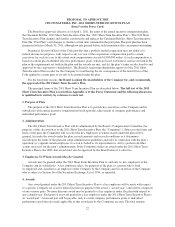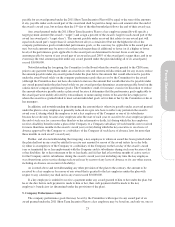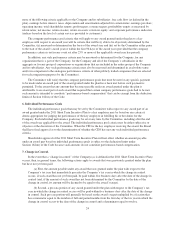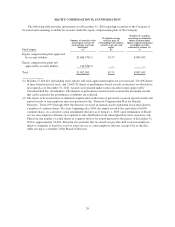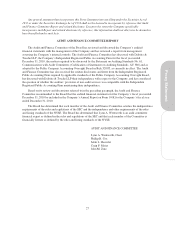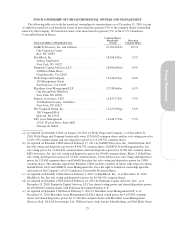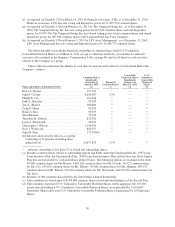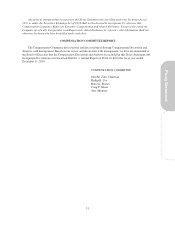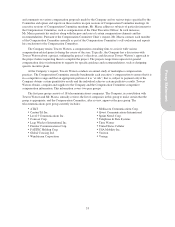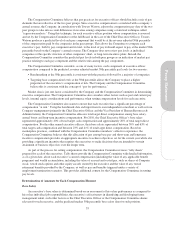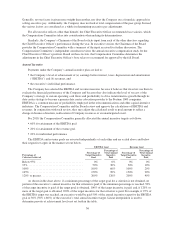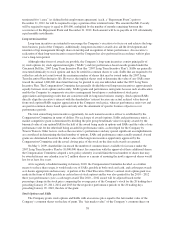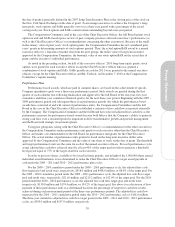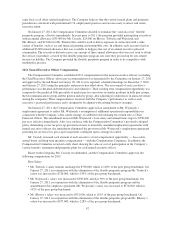Cincinnati Bell 2010 Annual Report Download - page 46
Download and view the complete annual report
Please find page 46 of the 2010 Cincinnati Bell annual report below. You can navigate through the pages in the report by either clicking on the pages listed below, or by using the keyword search tool below to find specific information within the annual report.COMPENSATION DISCUSSION AND ANALYSIS
General
This Compensation Discussion and Analysis will focus on:
•The philosophy and objectives of the Company’s executive compensation program.
•The goals that the executive compensation program is designed to reward.
•Each of the elements of the executive compensation program.
•Why the Compensation Committee selected the particular elements of compensation.
•How the Compensation Committee determines the amounts and formulas for pay.
•How each compensation element and the Company’s decisions regarding that element fit into the
Company’s overall compensation objectives and affect decisions regarding other elements.
Compensation Program Philosophy and Objectives
The Company’s compensation program has the following primary philosophy and objectives:
•Compensation must be competitive with other companies to attract and retain high-quality executives.
•A significant portion of total executive compensation should be “at risk” and tied to the achievement of
specific short-term and long-term performance objectives, principally the Company’s earnings, cash flow
and the performance of the Company’s common shares, thereby linking executive compensation with the
returns realized by shareholders.
•Compensation should provide a balance among each executive’s base salary and short-term and long-term
incentive components appropriate to the current and long-term goals and strategy of the Company.
Compensation Goals
The goals, which are designed to be awarded by the compensation program, are achievement of the
Company’s current and long-term strategy, which is to efficiently sustain operating earnings and cash flows in
the core communications business while driving transformative growth through its data center strategy to become
the premier data center colocation provider to the Fortune 1000 companies.
Compensation Elements and General Principles
There are three elements to the Company’s executive compensation program:
•Fixed compensation — Base salary.
•“At-risk” annual compensation — Annual incentives paid in cash.
•“At-risk” long-term compensation — Long-term incentives that are equity awards generally delivered in
the form of stock options, stock appreciation rights and performance units, which vest over time and upon
achievement of certain performance objectives and represent a significant portion of the executive’s total
compensation.
The Company provides these three forms of compensation to reflect competitive compensation practices, to
help accomplish its business objectives and to provide an appropriate reward for achieving short- and long-term
goals related to the Company’s current and long-term strategy.
Determining the Amount of Compensation
The Compensation Committee is primarily responsible for determining executive compensation. The
Compensation Committee has retained Mr. Charles Mazza, an independent compensation consultant who is
retained solely by the Compensation Committee and performs no services for management, to assist it in its
deliberations regarding executive compensation. Pursuant to the Committee’s instructions, Mr. Mazza analyzes
32


